Main menu
Common skin conditions

NEWS
Join DermNet PRO
Read more
Quick links
Authors: Vanessa Ngan, Staff Writer, 2003. Updated: Dr Maanasa Bandla, Intern, Monash Health, Melbourne, Australia; Dr Martin Keefe, Dermatologist, Christchurch, New Zealand. Copy edited by Gus Mitchell. August 2021. Minor update November 2025.
Introduction
Demographics
Causes
Clinical features
Complications
Diagnosis
Differential diagnoses
Treatment
Outcome
Folliculitis decalvans is a chronic, neutrophilic inflammation that results in scarring hair loss. Tufted hair folliculitis is probably a subset of folliculitis decalvans although tufting can be seen in other forms of cicatricial alopecia as well.
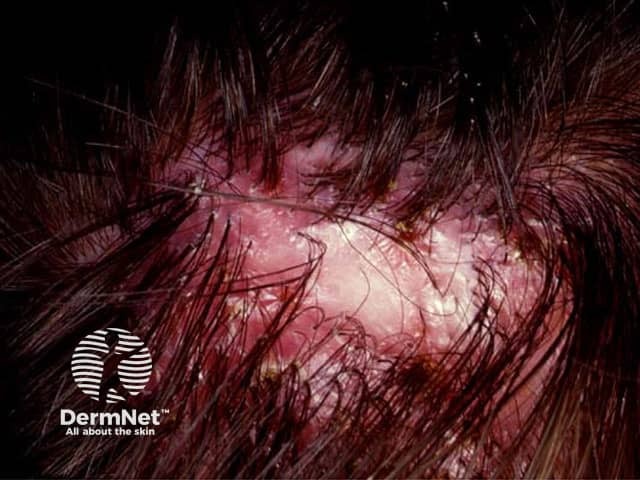
Folliculitis decalvans
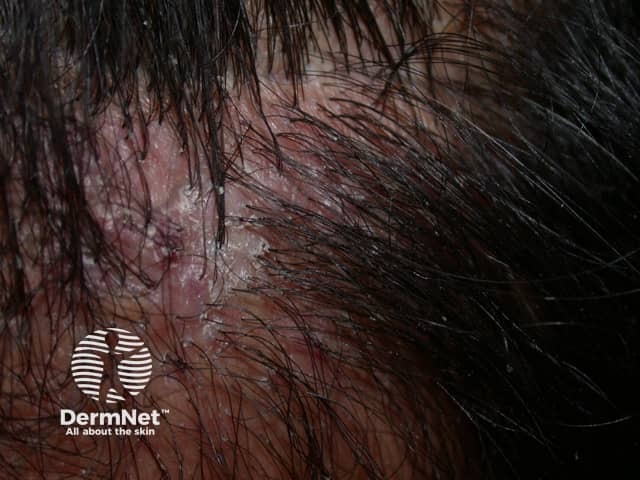
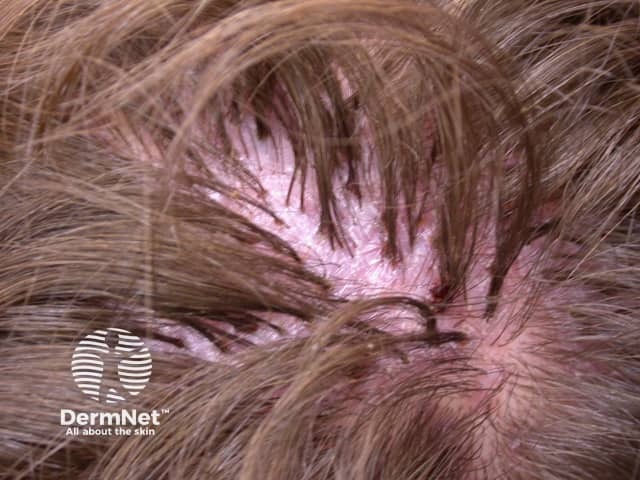
Folliculitis decalvans
Folliculitis decalvans usually presents in the 4th and 5th decades, with a male predominance. Children are not affected.
There are probably no racial differences in prevalence, although it has been claimed to be more common in African-American women.
Familial cases have been rarely reported.
Folliculitis decalvans is considered to be the result of an abnormal immune response to Staphylococcus aureus, although this is not yet proven.
Folliculitis decalvans typically affects the scalp, often around the crown, but may affect the beard area, axillae, limbs, and pubic hair. The characteristic clinical features include:

Perifollicular crusting and scale
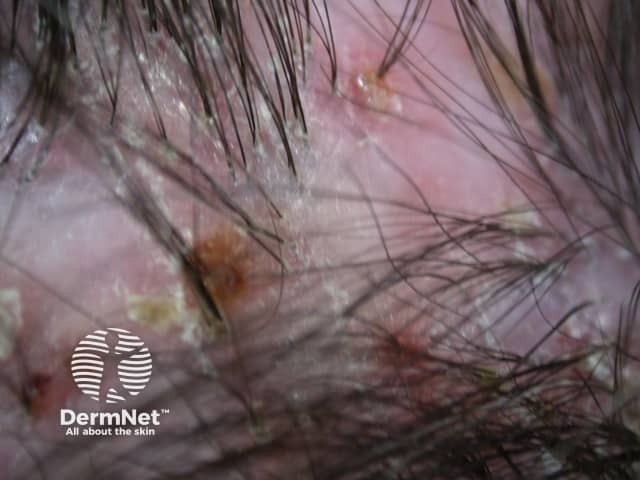
Tufted hairs and perifollicular crusting
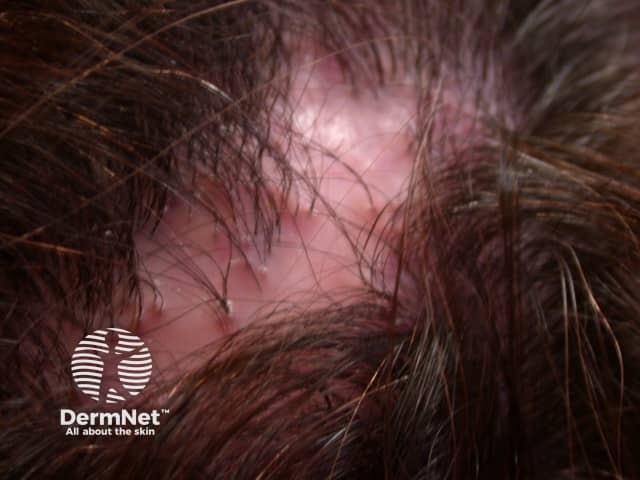
Tufted hairs and perifollicular erythema
Folliculitis decalvans is a clinical diagnosis confirmed on bacteriology/mycology and histology if required.
Skin biopsy of an early lesion shows a neutrophilic infiltrate dilating the infundibulum of the hair follicle. The follicle in later lesions has ruptured resulting in perifollicular scarring and mixed inflammatory infiltrate including foreign body giant cells.
Topical anti-inflammatory agents
Antibiotics
Other systemic agents (off-label)
Physical therapies
Folliculitis decalvans usually follows a chronic fluctuating course of exacerbations and remissions over many years. It is not clear that treatment influences the long-term prognosis despite successfully reducing inflammation in the short-term. Early diagnosis and treatment are important but permanent hair loss is to be expected.